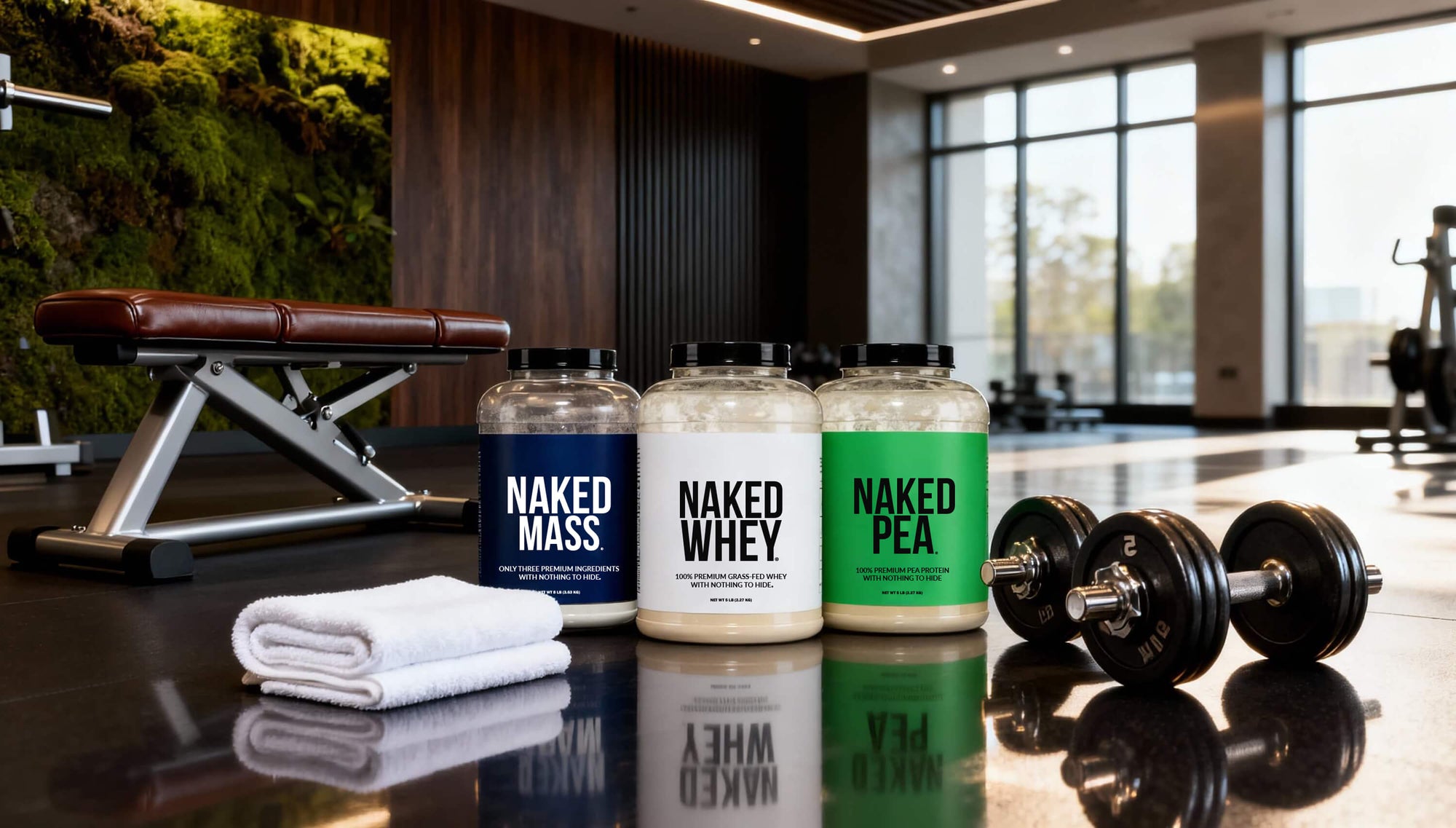Most lifters see progress as adding more weight to the bar. And while increasing load is a key part of progressive overload, it's far from the only tool available.
One method that’s highly effective, yet often overlooked, is tempo training – the strategic control of how fast or slow you perform each phase of a lift.
By manipulating tempo, you can stimulate muscle growth, break through plateaus, and improve joint control without necessarily increasing weight.
Want to know how it works? Keep reading and we’ll share everything.;
What Is Tempo Training?

Tempo training is when you control the speed of each phase of a lift, according to a specific time prescription, to increase muscle tension, improve form, and enhance strength gains.
Each rep is broken down into four key phases: the eccentric (lowering), isometric (pause at the bottom), concentric (lifting), and isometric pause at the top.
You’ll pace out each phase deliberately, typically following a four-digit code, where each number controls time spent in that portion of the movement.
For example, you might follow a 4-0-1-0 pattern, which translates to:
-
4 seconds lowering the weight
-
0 seconds pausing at the bottom
-
1 second lifting the weight
-
0 seconds pausing at the top
While many gym-goers perform reps with no particular timing, intentionally adjusting tempo can significantly alter the training stimulus.
Why Tempo Matters: The Physiology Behind It

Changing the speed of your reps directly affects time under tension (TUT), a key factor in stimulating muscle hypertrophy.
Slower eccentrics (the lowering portion of a lift) increase mechanical tension on muscle fibers. This creates greater micro-damage, which is necessary for muscle growth.
Studies have shown that lifters using slower eccentric tempos experience more hypertrophy in specific muscle groups, compared to those who lift quickly.
Specifically, one study by Shibata et al. (2021) found that slow eccentric tempos during squats led to significantly greater hypertrophy in the vastus lateralis (the largest part of the quadriceps) compared to fast eccentric tempos, even when training volume and load were matched.
From a strength perspective, the concentric phase plays a different role. Explosive lifting, or accelerating the weight during the upward phase, increases the recruitment of fast-twitch muscle fibers, which are critical for maximal strength development.
Research published in the Journal of Strength and Conditioning Research (2012) supports this, showing that lifters who employed explosive concentrics saw roughly 16% greater strength gains over time compared to those using slower concentrics.
The takeaway? Tempo is not just a way to increase difficulty. It’s a tool to selectively emphasize different adaptations.
Controlled eccentrics and pauses boost hypertrophy and control. While explosive concentrics maximize power and strength adaptations.
Tempo and Progressive Overload

Most people know that, to make progress in the gym, you need progressive overload.
This often means adding more weight over time, or increasing reps. But there are many more ways to achieve progressive overload, other than just more weight, reps or sets.
You can also progressively challenge your muscles by manipulating tempo. This includes:
-
Slowing down the eccentric phase
-
Adding pauses at the bottom of a lift
-
Extending total rep duration
-
Focusing on explosive concentrics
These adjustments increase the demand on your muscles, even if the load stays the same. For example, performing a squat with a 5-second descent and a 2-second pause at the bottom is dramatically more challenging than rushing through it.
This means you can keep progressing even during deload weeks or while recovering from injury.
Matching Tempo to Your Goals

Tempo training is not just a one-size-fits-all program. It’s a way to tailor your training to the specific goals and outcomes you want to achieve.
Different tempos yield different benefits. Here's how to tailor tempo based on your training goal:
Muscle Growth (Hypertrophy)
If you’re training for size, emphasize slow eccentrics and moderate total rep durations.
The goal is to maximize time under tension, close to failure. Research indicates that a tempo of between 2-8 seconds per rep is the sweet spot for hypertrophy.
Strength
If your goal is to build strength, combine controlled eccentrics (2-3 seconds) with explosive concentrics.
This builds joint control while maximizing force output, which is what leads to neuromuscular adaptations (i.e. increased muscle strength).
Muscular Endurance & Joint Health
Alternatively, ultra-slow tempos (e.g., 5-5-5-0) can improve integrity and resilience in the connective tissues (i.e. tendons and joints), as well as improving muscular endurance.
The reasoning is pretty straightforward. The muscles and joints require more endurance to sustain longer rep durations. So extending your reps and increasing time under tension trains these adaptations.
This is a great way to build your training for long-term health and longevity.
How to Program Tempo Into Your Workouts

To integrate tempo training effectively, it’s important to match the strategy to your phase of training. At the same time, manage fatigue smartly, so you don’t overdo it.
For most lifters, focusing on tempo for two to three key compound lifts per session is enough. These might include squats, deadlifts, presses, or rows. Accessory movements can be done at a normal tempo.
Remember that you don’t need to go all-in on tempo from the start. You can gradually introduce more focused tempo training into your regular routine.
Here’s an example of how you might start out:
-
Begin by introducing a clear tempo prescription in your program, such as using a 3-1-2-0 for Romanian deadlifts or a 5-0-1-0 for back squats.
-
Record the tempo alongside sets and reps, so you can monitor progressive overload.
-
Start small, and aim to progress each week.
-
One week might involve a 3-second eccentric, while the next progresses to a 4-second descent or adds a 2-second pause at the bottom.
-
When you increase weight, start with an easier tempo, then start the progression again.
You can also do periodization by switching between blocks focused on different adaptations.
For example, you might train for a few weeks focusing on hypertrophy, with slow, controlled reps. Following that, you move onto a strength block – with faster concentrics and shorter rep durations.
This can help you achieve more all-round benefits from your training program.
Common Pitfalls to Avoid

Tempo training can be a powerful tool. But it’s not without its challenges.
Doing it wrong can lead to ineffective training, burnout, or increased risk of injury.
Here are some common mistakes to watch out for:
Letting form deteriorate as the set progresses
One of the most common errors is allowing form to deteriorate during extended time under tension.
Long eccentrics or pauses are more taxing, and fatigue can cause technique to break down. Always prioritize maintaining strict form over completing the prescribed tempo.
Choosing tempos that are too slow
Another pitfall is choosing tempos that are excessively slow, to the point of compromising movement quality.
While 5-second eccentrics can be useful, going beyond that (especially with poor control or inadequate mobility) can lead to compensation patterns or strain.
Overcomplicating before mastering basics
Some lifters also get caught up in overly complex timing schemes, trying to micromanage every movement.
Start simple. A basic 3-1-1-0 or 4-0-2-0 can go a long way. Consistency and effort matter more than exotic variations.
Overcoming common pitfalls
To mitigate these issues, consider using a metronome app or counting the tempo aloud. Filming your sets can also help you audit whether you're adhering to your intended tempo.
And remember that tempo training is a tool, not a requirement for every single exercise.
Use it strategically for your main lifts or during specific blocks, and avoid overloading your entire program with slow-tempo movements unless that’s your explicit focus.
Final Thoughts: Make Tempo Part of Your Training Arsenal
Tempo training is a powerful and underutilized method for building muscle, improving strength, and adding variety to your workouts.
Whether you're a beginner learning body control, or an advanced lifter managing joint stress, adjusting rep speed can help you continue progressing safely and effectively.
By being intentional with your tempo, you expand your toolbox for progressive overload far beyond just adding weight. And that's a smart, sustainable way to train.









